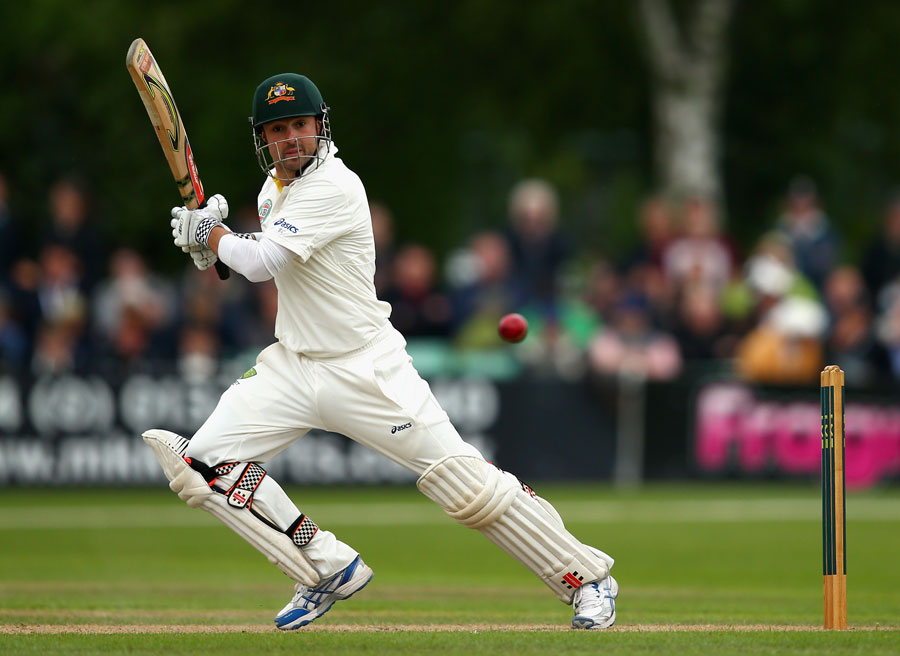
When your feet and hands talk to each other, the runs start to flow © Getty Images
I recently stumbled upon a short but wonderful five-minute video on a camouflaging octopus. Its climax featured it changing its colour and texture to make it look like the surrounding coral.
It provoked thoughts about my own evolution and the impact our environment has on our behaviours. Slowly I started to piece the narrative of my cricket growth together. More specifically, how my own batting had changed and shifted, sometimes subconsciously, other times deliberately, to adapt to various conditions around the country and the world. I realised that what I occasionally thought was right was, in fact, inhibiting my game. Imagine the octopus camouflaged as coral in the middle of the Sahara.
Growing up, I had always tapped my bat in a relaxed and rhythmic manner at the crease. My batting was natural and flowing, and though I had no knowledge of its benefits, my "technique" allowed me to score freely around the ground. Of course I still had deficiencies - some days it felt like I had magnets in my front pad and the ball was made of iron - but I was learning about the game. I enjoyed the feeling of being able to hit the ball where I wanted by simply picking up my bat, moving my foot to where I thought it was going to bounce and swinging. If I wanted to hit the ball a fraction later, on top of the bounce, my hands would allow for a change in bat speed, as they were moving as required and in sync with my feet.
I enjoyed being an aggressive opening batsman with a good defence. I got caught at long-on too often off the spinners in the exuberance of youth, but it always felt like my risk-taking was calculated. My batting lacked consistency, but when it was on, it was on. I thought I understood my game, my limitations, but in hindsight I understood the feeling of rhythmical batting and that the hunger to score runs relied on a clear mind and the reliance on a manageable routine. That was about it. I played the game generally with a smile - scoring runs is fun after all. Writing about it now makes it sound like it was too good to be true.
The first significant evolution came when I entered professional cricket at 21. I had always played the pull shot, but I quickly realised playing the short ball at 140kph was a different proposition. Ducking and weaving became my modus operandi. In the modern era, no one escapes trial by video, and word spread to not let the kid drive. "Push him back, he won't hurt you unless you feed the cut." Run-scoring slowed and my ribs were generally bruised.
| | | | |
| |
| I loved the challenge of opening the batting, but my enjoyment of my own batting started to wane. I found it hard to appreciate the days I did score runs. I always felt like the handbrake was on |
| |
| | |
|
The following pre-season, I vowed to stay one step ahead of the opposition by finding my pull shot afresh: if played efficiently and selectively, it would force the bowlers to pitch it up and allow me to play my favoured drives. For months I practised facing tennis balls out of a bowling machine at abnormally fast speeds. I found by holding my bat off the ground, as high as the top of my pad, I got a little head start. Time I thought, was what I needed.
The second ball of the season was a bouncer from Andy Bichel, and out of pure instinct I pulled it over square leg. I could see a look of bemusement in his eye as he growled an expletive. With this slight camouflage I had adapted to my new professional environment. Not to say it was perfect. Some days my hands would drift from my back hip and I would slice across the ball, but I told myself you have to give something to get something, and it generally felt like the trade-off had been a fair one.
The second major adaptation in my technique came after spending 12 months in Tasmania. Our home wicket was a seaming monster and driving on it a very risky proposition. Fielders would be loaded behind the wicket, licking their lips, ready to lap up any half-mistake. Batting was hard work but I loved it. You had to grind, play the ball late and cautiously, and be prepared to be in at tea to get a big first-innings score.
With a big red cross against the drive, I started to hold my bat up higher off the ground, like a baseballer at the mound in what proved a highly effective position to cut and pull. It was also a great position to just drop the bat into the line of the ball for a forward defence. The bat would generally come down at one pace. It was certainly repeatable and it felt little could go wrong. It took the variation out of batting. Risk-free almost, but with no risk comes little reward. Ironically, due to the plane of the swing, it also helped my one-day cricket "slog" over cow corner, and with the emergence of the BBL, it felt like a decent technique to apply across formats.
I would hide the deficiency of not being able to drive with any power by practising with a sawed-off bat, ensuring I got low into my drives to compensate for not having a swing at the ball, as well as having an overly wide stance. My footwork relied on a heavy forward commitment that was the only way to create any power down the ground. If in sync it still felt good, but flowing batting was rarely the order of the day. I was hard to get out but rarely dominant. Batting had become mechanical and success relied on the mental strength of resistance: defend, don't get out for long enough and you will walk off with some well-grafted runs. I had found a method that generally worked in my environment and I was going to stick to it.
The first person who alerted me to the dangers of my new technique was Greg Chappell - a natural maestro and modern great of the game. You would think he had decent credentials for me to value his opinion and perhaps heed his advice. I politely declined. I had just scored my first hundred for Australia A and was feeling pretty good about my game. I would prove him wrong, I thought. Despite my bubble being limited, it was comfortably consistent. I kept telling myself, "It's not how but how many." Looking back, I was being stubborn, as though it was just another hurdle to overcome, another challenge to rise to.
| 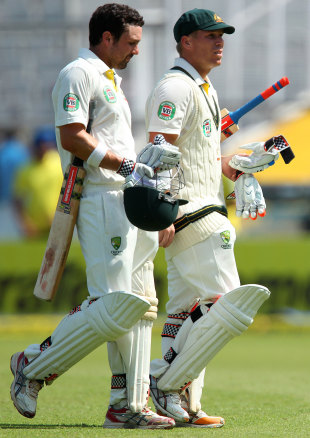
| Cowan and Warner's partnership was based on Warner's ability to attack effectively and Cowan's ability to not get out too cheaply © BCCI |
| Enlarge
|
|
|
The height of my bat admittedly fluctuated depending on whom I was playing and where and how I was feeling, but slowly and surely I started to resemble a caricature of myself. My stance got wider, my hands slowly slipping further ahead of my back hip. As a job, I loved the challenge of opening the batting, but my enjoyment of my own batting started to wane. I found it hard to appreciate the days I did score runs. I always felt like the handbrake was on. I struggled to watch footage of myself. I wanted to change, but it is either a courageous or incredibly stupid man who would do this in the middle of a series or season. The stakes had become too high.
By this stage, I was acting it all out on the brightly lit stage of international cricket. The game at this level felt largely mental. I knew my limitations and I was prepared to not swim outside the flags, so to speak. I found myself exhausted by the time I had ground my way to 30 or so, and would eventually get out having put little pressure on the bowler. My opening partnership success with David Warner was forged on his innate ability to smack it around and my ability to not get out too cheaply more often than not. I was a ball de-shiner. Or so it felt. His tank was full of premium unleaded to my diesel. Some days we got there just the same, but he would often roar like an F1 to my farm tractor.
An Australian legend of a different kind was the next to try and help, offering the advice that I would find freedom if I narrowed my stance and tapped my bat. This time it was coming from a friend. Justin Langer's words, unlike Chappell's, felt fatherly. He had spent hours with me honing my game and was invested. I went out and batted for him every time I crossed the rope. He mentioned it once in the West Indies during a rain break, but he also knew of the difficulties of changing the recipe on demand. He mentioned it again last season as it became more and more clear that my camouflage had worn off and I was a sitting duck to the predatory bowlers around the country.
And so to the present and the latest adaptation: the winter of 2014 saw my first "off season" in three years. Finally an opportunity to not just fine-tune but rebuild the car from scratch. The game as a travelling professional is now a 12-month gig, which in itself has its drawbacks when you're trying to make improvements to your game. It only feels like you are picking up little gains, and directing more attention towards competing week in, week out. There is little time to step back, take stock and go about putting the parts backs together.
I set about finding my 20-year-old self who had made the game so simple. I started to tap the bat and pick it up only when it was required. Within ten minutes I felt like a bird released from its cage. The ball started to fly purely off the face of the willow as it is meant to - with little effort and an ease that only comes when your feet and hands are talking to each other like loving siblings. That is not to say this guarantees more runs, but I feel like at least I am giving myself the best chance.
| | | | |
| |
| I set about finding my 20-year-old self who had made the game so simple. I started to tap the bat and pick it up only when it was required. Within ten minutes I felt like a bird released from a cage |
| |
| | |
|
Having made the change, and enjoying the freedom it is providing, it seems that history is also on my side - a shot of the top 15 Australian run scorers in Test and first-class cricket recently appeared on our change-room wall. The photos were taken as the bowler was in his delivery stride. All but one batsman has his bat touching the ground. Admittedly most then move their bat upwards as the ball is leaving the hand, ready to pounce.
Imitation, they say, is the greatest form of flattery. For years Australians would mock English batting techniques as structured and complicated, and yet we have a generation of Australian cricketers replicating their styles. Cricket on television is an important medium for skill development, but also turns the players into imitators. Trying to bat like your favourite player is akin to a teenage girl wanting to dress like Kim Kardashian. Perhaps in their formative years of the mid-2000s - years that saw such English dominance (think Cook, Pietersen and Bell at their best) - youngsters jumped ship on the "Australian way" and imitated those succeeding at the time.
Finding your way as a young professional brings you up against the ultimate paradox. You may try to find consistency to ensure a lengthy career in a tough but financially rewarding environment by minimising risk and simply "surviving", but this will no doubt diminish your ability to put pressure on the bowlers. The more pressure the bowler feels, the more likely they are going to serve up more run-scoring balls and fewer wicket-taking ones. Even in this day and age of travelling batting coaches, analysts, mentors and batting gurus, the journey to find improvement and how you want to play is self-driven. Effective coaching is as much about leading the horse to the trough and allowing self-discovery, as arousing its interest in a drink.
The tide, though, it seems, is turning. I have seen Adam Voges in recent seasons - perhaps at the suggestion of Langer - go back to his natural best, George Bailey and Tim Paine, both fine players and as naturally gifted as they come, too have returned to tapping their bats in recent weeks and months.
Writing about my own batting seems a little self-indulgent, but the motive is simply to illuminate my journey and self-discovery in what has been a ten-year batting evolution. Perhaps if just one young cricketer retains his naturalness then the self-indulgence will be worthwhile.
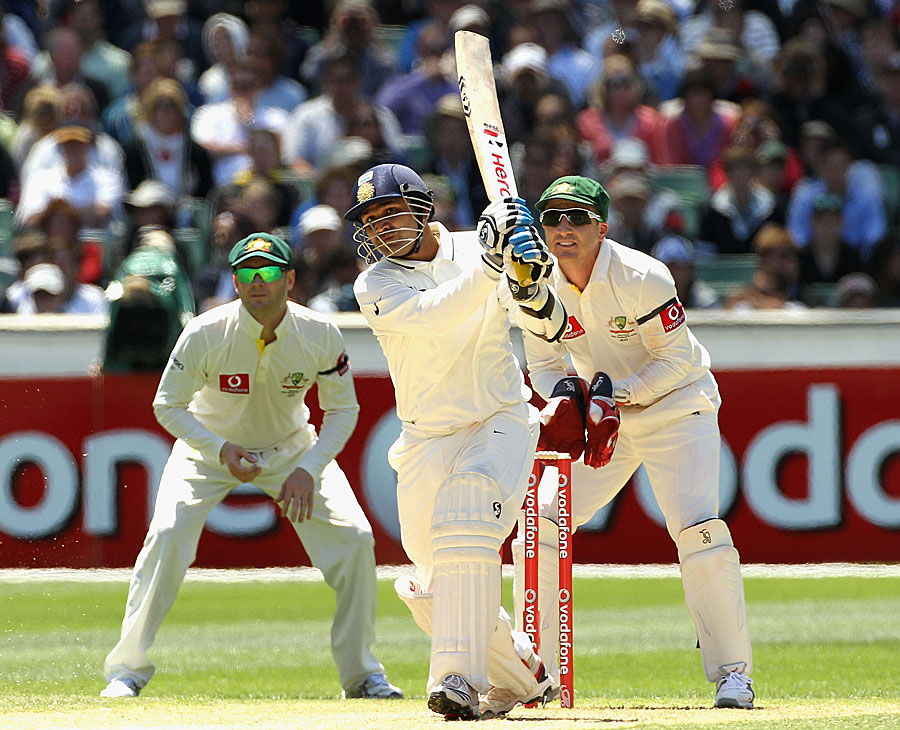 Sehwag: an experience that grabs you © Getty Images
Sehwag: an experience that grabs you © Getty Images

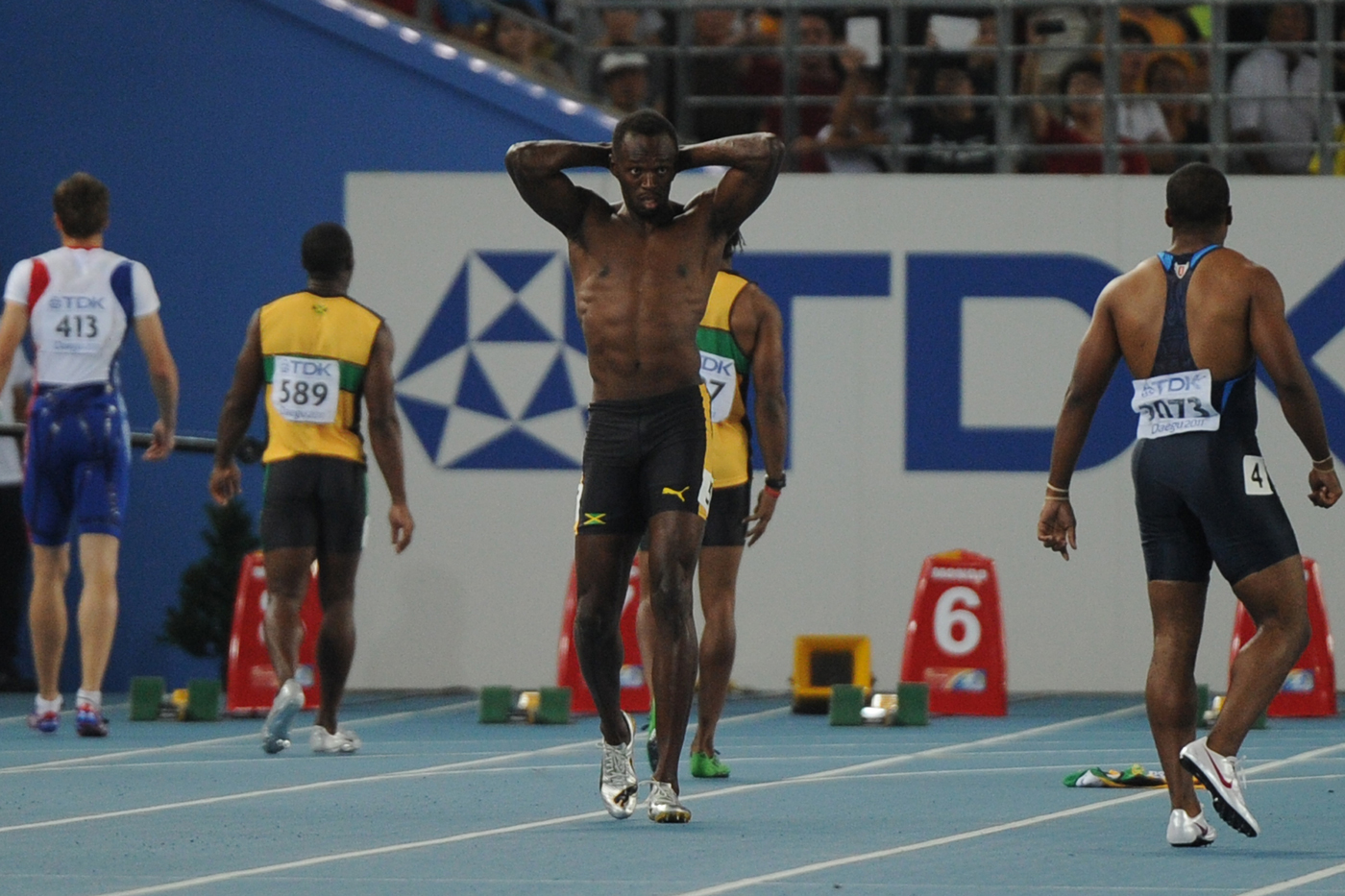

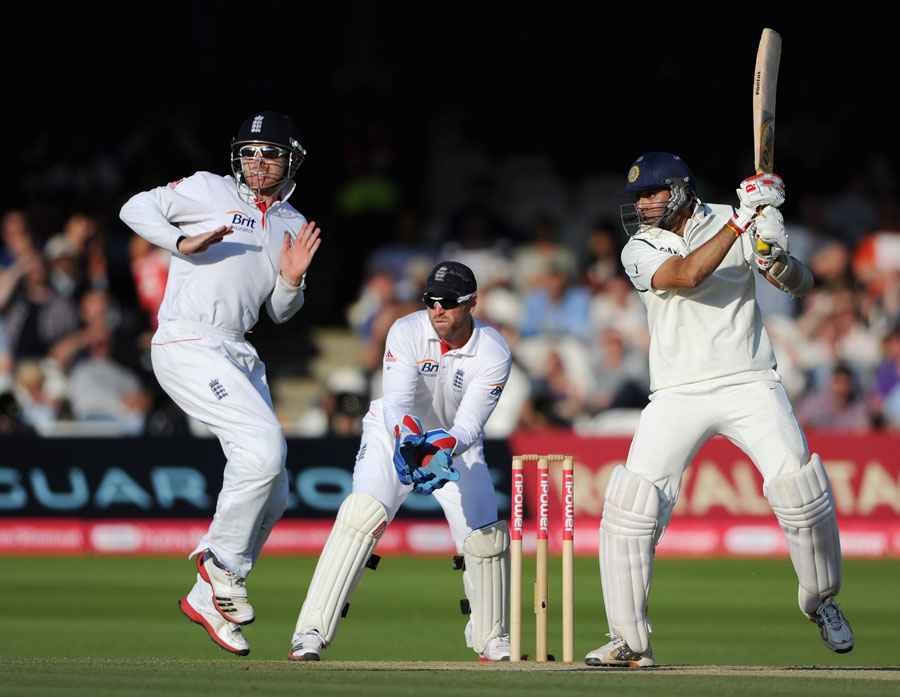 VVS Laxman set a worthy example of how to play on a pitch that takes turn: by scoring more off the back foot than off the front © Getty Images
VVS Laxman set a worthy example of how to play on a pitch that takes turn: by scoring more off the back foot than off the front © Getty Images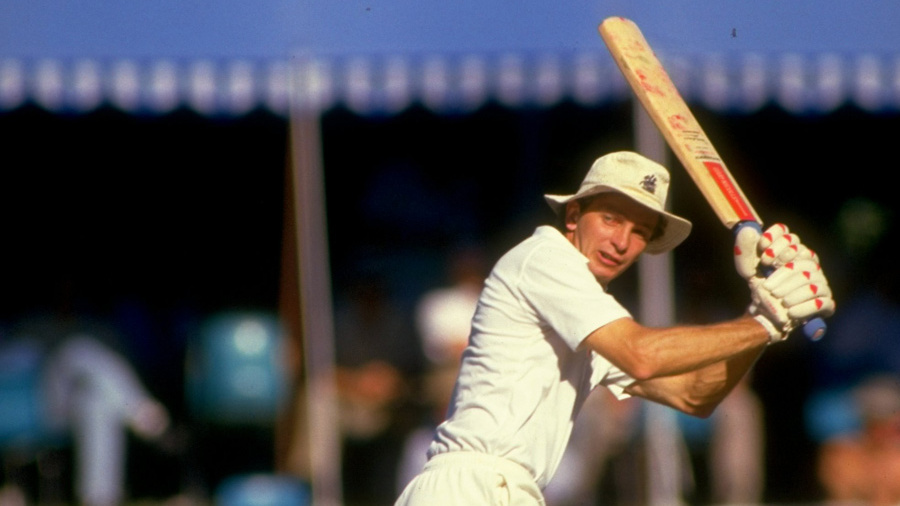 David Gower: poise, fragility and ineffable beauty © Getty Images
David Gower: poise, fragility and ineffable beauty © Getty Images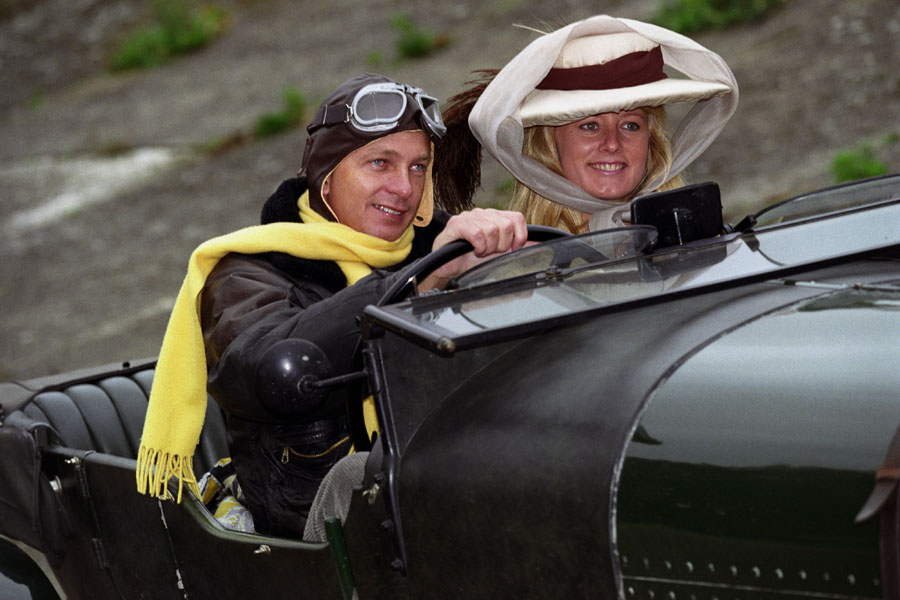 Gower, seen here with wife Thorunn, was at his mesmerising best against the Australians in 1985 © PA Photos
Gower, seen here with wife Thorunn, was at his mesmerising best against the Australians in 1985 © PA Photos


